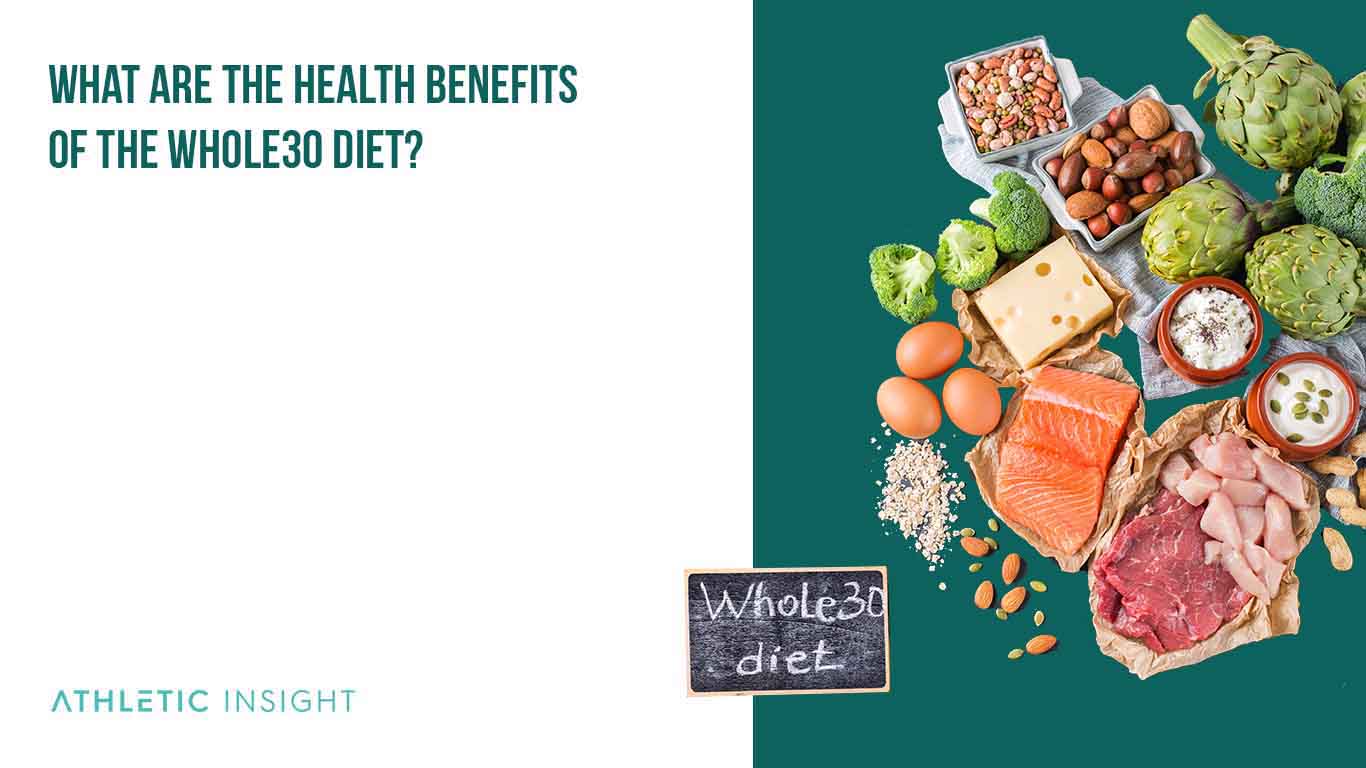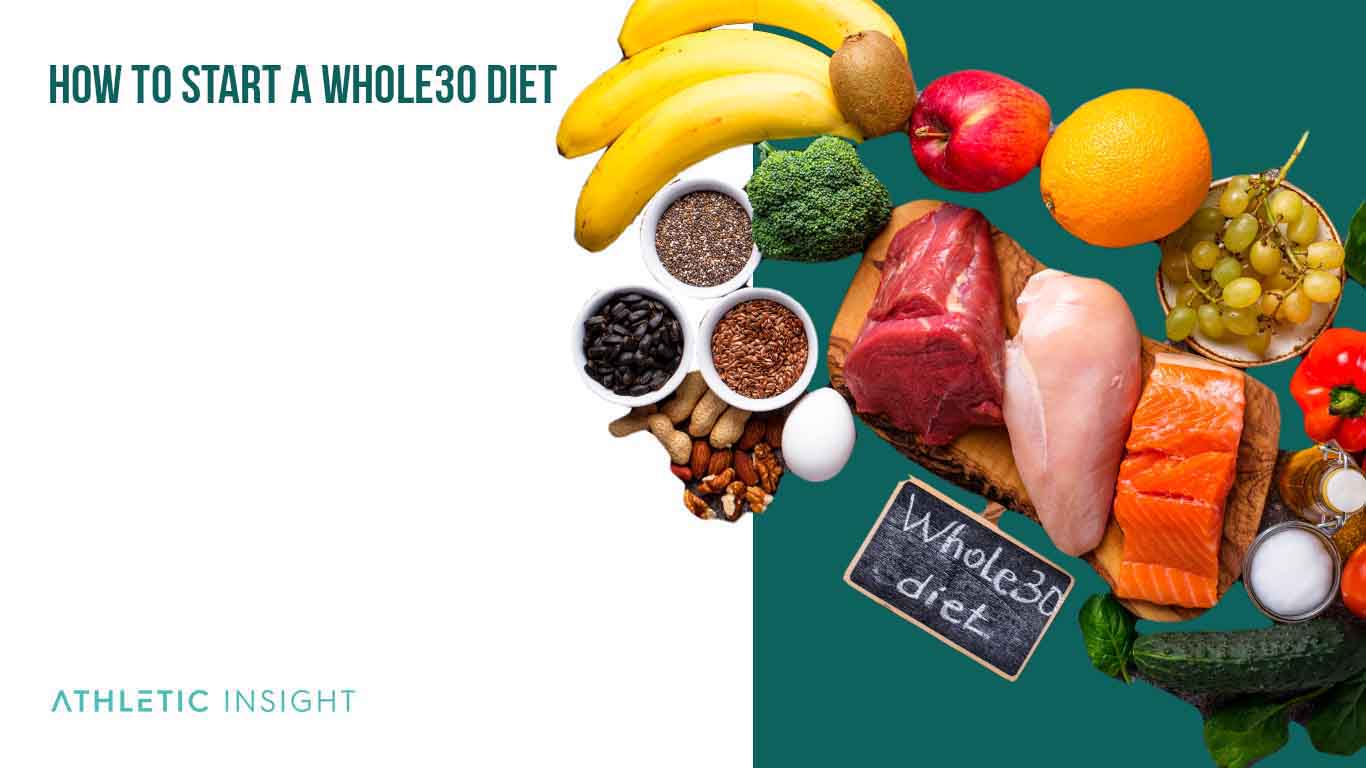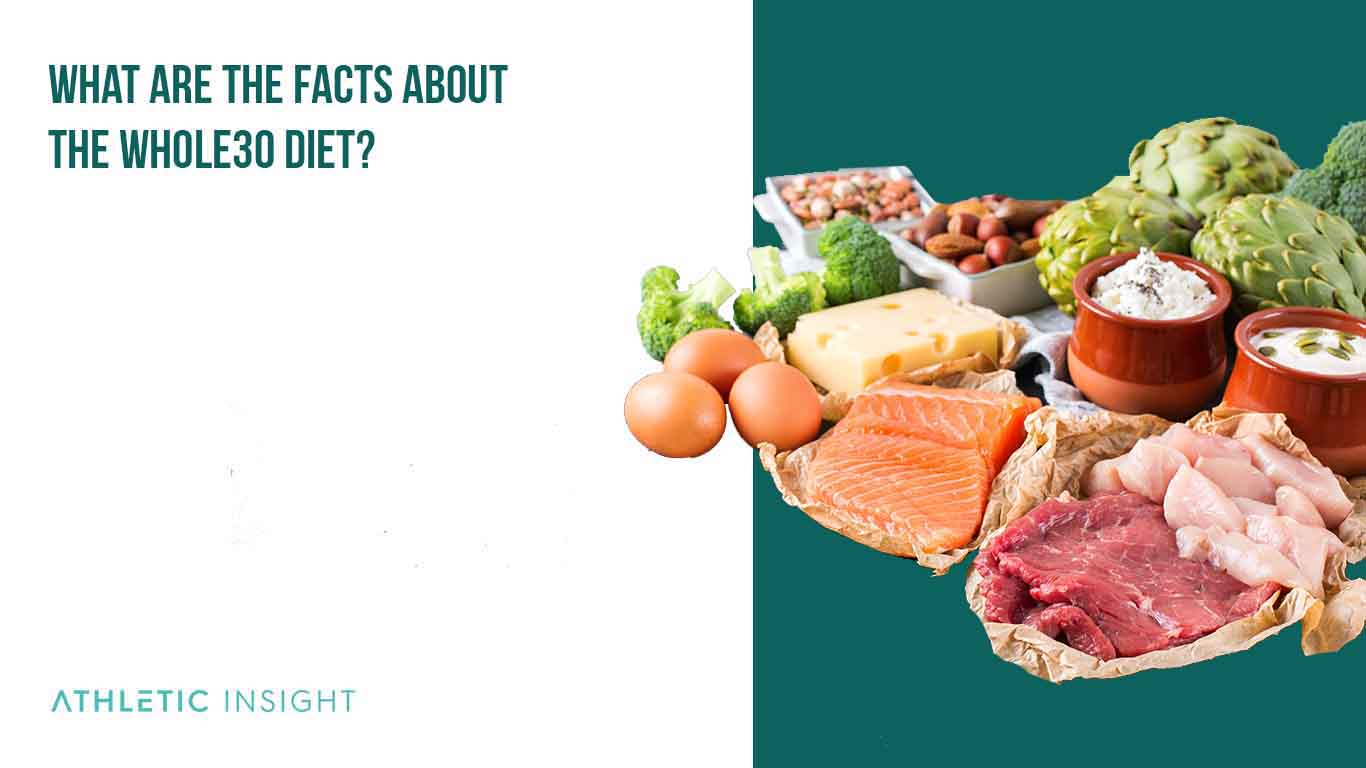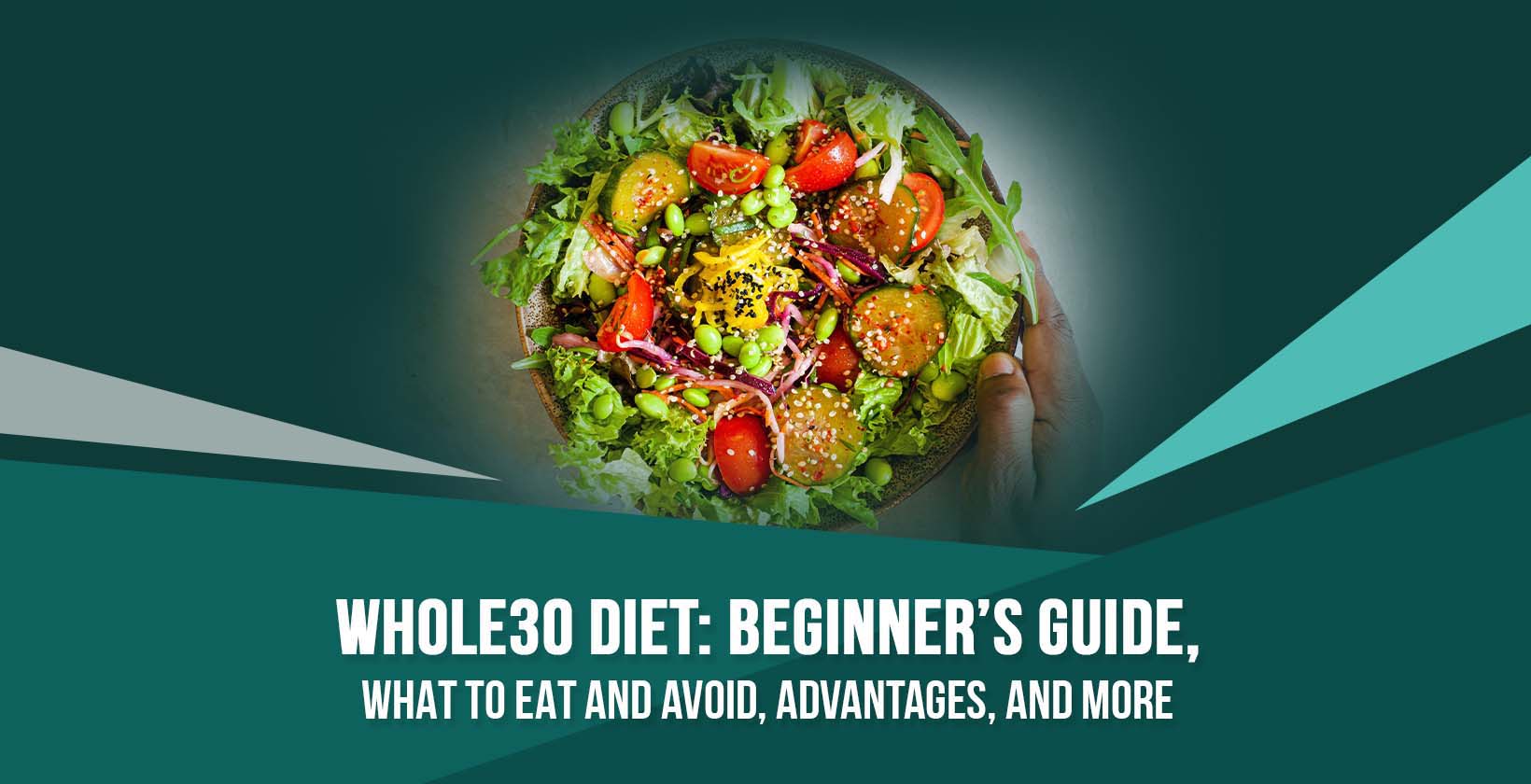The Whole30 diet is a program that eliminates most foods for thirty days to help people essentially reset their bodies. The program insists it is not a diet as much as a life-changing venture that helps individuals identify foods that negatively impact their bodies.
Whole30 advocates argue that this elimination approach has several benefits, including cutting cravings, improving or resolving digestive problems, and rebalancing hormone levels. Additionally, the program can improve chronic medical issues, boost the immune system, and increase overall energy levels.
This program works by cutting out all dairy, grains, and sugar for thirty days. People should focus on whole foods, especially vegetables. There is a heavy focus on meal planning and prep to avoid accidental cheats.
The Whole30 diet is similar to Paleo, a popular alternative. However, the Paleo diet permits some foods, like honey, that Whole30 excludes.
How Does the Whole30 Diet Work?
The Whole30 program involves an extremely restrictive diet for thirty days. However, the Whole30 timeline should give the body a chance to reset and rid itself of toxins that trigger inflammation and other chronic issues. What does that look like in the day-to-day?
Step 1: The First Day
Like any diet, most people start off feeling motivated and exhilarated by the promise of better health. It’s easy to make it through the first day thanks to a healthy dose of empowerment overtaking the challenge.
Step 2: The First Week
Some people struggle with the first week as the truth of the restrictions set in. Many people experience a sort of hangover effect related to the sudden absence of crap in their bodies. It’s more important than ever to increase water intake to support the body through the transition.
Eventually, the hangover gives way to moodiness and an unexpected edginess. Take a deep breath and push through the discomfort, preferably without taking anybody’s head off.
By the end of the first week, most people feel a shocking dip in energy. This overwhelming exhaustion marks the body’s need to reframe how it converts food into energy.
Step 3: Week Two
The onset of week two marks a period of notable discomfort, mostly in the form of digestive issues. Expect to experience bloating, diarrhea, constipation, or a combination of all of the above as the body switches gears to process whole food instead of junk.
By the middle of week two, many people falter and consider dropping out. It’s harder than they thought and loaded with extreme discomfort. Focusing on the prize, the promised land of a better existence, they push past the midway point. All digestive turmoil is over and the mental fight begins.
Step 4: Week Three
Around day sixteen, most Whole30 participants experience their first glimpses of the promised land. Often referred to as the Tiger Blood stage, individuals master cravings, feel more focused, and explode with energy. Further, those mood swings are a thing of the past and the cruise control is set to happy.
Step 5: The Last Three Days
It’s easy to give up a day or two early, especially when people feel outstanding. Fighting through those last few days finalizes the effects and leaves many wondering what they will eat on day 31.
Once participants reach day 31, they can continue as they have been or slowly experiment with other foods. By gradually introducing foods, they can see what their bodies can tolerate.
What are the Health Benefits of the Whole30 Diet?
This program aims to change an individual’s entire life in thirty days. It boasts multiple benefits with a massive overall health boost.

1. Weight Loss with a Whole30 Diet
It’s important to note that this program is not a weight loss plan and part of the program involves avoiding measurements and scales for the full thirty days. However, it helps users maintain a moderate weight and most people lose weight.
2. Potentially Improve Chronic Health Conditions
The Whole30 program notes that past participants noted improvement in several chronic health conditions, including high blood pressure, allergies, diabetes, migraines, depression, and arthritis.
3. Resolve Digestive Problems
While many digestive issues are chronic health conditions, including GERD and IBS, this type of elimination program is especially helpful. It helps people identify what foods trigger and exacerbate the symptoms.
4. Get Clearer Skin
Many skin conditions and breakouts relate directly to a person’s diet. Eliminating most foods, especially those known to contribute to acne and irritation can yield a clearer complexion.
5. Improve Sleep and Increase Energy Levels
One of the major perks of a Whole30 program is improved sleep and increased energy levels. Sleep and energy are so closely related, and this program helps individuals on both fronts.
It’s all about the Tiger Blood phase! People sleep better and wake up refreshed leading to more effective workouts and increased mood.
6. Transform Taste Buds
Modern food contains loads of additives, especially the heavily processed varieties so many people rely on daily. It should be no surprise that cutting them out resets the taste buds to appreciate flavors differently. Participants might find they like foods they didn’t like before because their taste buds changed during the program.
7. Access Tasty Recipes
Just because there’s a laundry list of food to avoid doesn’t mean there aren’t delectable Whole30 recipes just waiting to dazzle new and improved taste buds. The program has been around long enough that many people experimented with and introduced new Whole30 recipes.
8. Discover What Foods Have A Negative Impact
As noted previously, on day 31, participants can try reintroducing foods to their diets to see what their bodies can tolerate. It’s an excellent way to determine what food causes negative effects, like those burdensome chronic health issues.
What are the Health Risks of the Whole30 Diet?
There are some health risks related to the Whole30 diet. It can impact the digestive system, beyond the first week as people struggle to adjust to the restrictive meal plan. Consequently, it can enhance some food sensitivities so that individuals can’t ever eat those things again.
Also, some of the foods eliminated in this diet have notable health benefits, like whole grains and legumes. Cutting them out of one’s diet can increase the risk of some chronic conditions, like high cholesterol.
Finally, it’s not an easy plan to follow and might trigger cravings more than other options.
What are the Rules of the Whole30 Diet?
The rules of the Whole30 diet are rather basic at first glance and make the program seem easy.
1. Eat Real Foods
Bypass the processed foods, sugar, alcohol, grains, and other restricted foods. Reach for whole foods, like vegetables and fruit. Meat and seafood are on the table and should round out meals.
2. Commit 100 Percent for 30 Days
It is a thirty-day plan, meaning that stopping at day 28 or cheating on day 10 resets the clock to day one. This program requires a strong commitment for a full 30 days because anything less won’t produce the full range of benefits.
3. Stay off the Scale
One of the key selling points of this program is that participants don’t have to take measurements or weigh themselves. In fact, people participating in the Whole30 diet should completely avoid measurements and scales for the entire thirty days.
What are the Things to Avoid in the Whole30 Diet?
The Whole30 diet is restrictive because it’s an elimination program, so plan to avoid the following.
- No added sugar, real or artificial. That means avoiding everything from honey to Splenda. Additionally, sugar-free gum is off the list because it typically contains xylitol.
- No alcohol at all, not even for cooking purposes.
- No grains, including “good” whole grains, like quinoa and rice.
- No legumes, except for green beans and peas.
- No dairy at all; even yogurt and cheese are out.
- Nothing with carrageenan or sulfites, meaning check labels on food and skip anything that contains either one.
- No purchased or revamped baked goods. Say goodbye to treats for the duration of the program, even baked goods reworked with Whole30-friendly ingredients.
- Do not track weight or measurements for 30 days.
How to Start a Whole30 Diet
Getting started with a Whole30 diet is a commitment, but going in prepared can help anyone succeed.

- Research the Whole30 program, learn the rules, and craft a list of recipes.
- Create a plan with an end date and stick with it.
- Clear the kitchen of everything that doesn’t work with the program to limit temptations.
- Pick a partner to do the program with and keep each other on track.
- Hide or toss your scale to resist that temptation.
- Look for pre-made options that fit with the Whole30 plan to keep those on hand.
The most common mistakes during the Whole30 Diet include not eating enough and failing to build a support system before starting. This program doesn’t involve weighing food or counting calories, because participants should eat plenty within the permitted items. Additionally, having a strong support system is critical to success.
What are the Whole30 Diet Approved Foods?
That’s a lot of discussion about what not to do, but the program still includes a lot of tasty morsels and plenty of meal opportunities.
- Vegetables, including sweet potatoes, broccoli, and eggplant serve as a foundation for the Whole30 program.
- Fruit is another staple and that means smoothies are on the table!
- Seafood recipes make excellent dinners and provide plenty of room for experimentation with herbs and seasonings.
- Meat is another option for protein and it’s possible to try new cuts or old favorites, like filet mignon or a hearty sirloin steak.
- Nuts and seeds make exceptional snacks to tide you over, except for peanuts.
- Eggs provide a range of meal options including omelets and quiche.
- Olive oil and coconut oil are two popular Whole30 oils, but users can also have avocado oil, palm oil, and ghee.
- Black coffee allows participants to state their caffeine needs.
The Whole30 diet food list isn’t as restrictive as it sounds, especially when people realize how many herbs and spices they can use. It’s fun to experiment with different combinations and find new ways to make dishes interesting.
What are the Foods That You Should Avoid While on a Whole30 Diet?
Before jumping into the Whole30 diet, it helps to know a bit more about what to avoid. This program is extremely restrictive and excludes more foods than many similar diets.
- Dairy in all forms is off the table, including substitutes and related products like cream cheese and sour cream.
- Grains, including wheat, oats, rice, quinoa, and bran are prohibited.
- Added sugar and artificial sweeteners are out.
- Legumes include most beans, peanuts, and soy. That means no tofu, miso, peanut butter, or garbanzo beans.
- Alcohol, including beer, wine, and liquor is a no-go, not even for cooking.
- Pasta, unless it’s entirely made from veggies, won’t be on the menu for thirty days.
- Bread, along with other grains, is out.
- Processed additives commonly trigger or aggravate food sensitivities and digestive issues, along with increasing food dependence, so it’s important to cut them out.
- French fries and potato chips contain a lot of the additives and extras that Whole30 wants to eliminate.
It’s important to avoid these foods to let the body reset and learn how to metabolize whole foods more healthily. Since many of the above foods contribute to inflammation and other chronic issues, it’s necessary to eliminate them all to let the body recover.
Who Should Do the Whole30 Diet?
People who desperately need a reset and feel like nothing else has worked should consider the Whole30 program. If they suspect that some foods are causing their issues but they don’t know which ones, it’s an excellent way to sort that out.
Additionally, the Whole30 diet is a solid option for people who constantly feel fatigued and fight general malaise. It takes a willingness to experiment with Whole30 Recipes and commit to the program for the full thirty days.
What are the Best Whole30 Recipes?
For those wondering how to survive the program with so many limitations, consider these top Whole30 recipes for breakfast, lunch, dinner, and snack time. All of these recipes are Whole30-friendly recipes for beginners.
Top Whole30 Breakfast Ideas
Start the day off right with these awesome Whole30 breakfasts.
- Whole30 Bacon and Golden, Crispy Potato Breakfast Bowl with bacon, sweet or white potatoes, eggs, and avocado
- Sweet Potato Toast with a slice of roasted sweet potato instead of bread and whatever Whole30
- Sweet Potato and Apple Mash bake up nicely in the oven and the flavors blend nicely
Top Whole30 Lunch Ideas
Satisfy midday cravings with these tasty Whole 30 lunch recipes.
- Paleo Lemon Tahini Tuna Salad over greens and veggies can satisfy even the most discerning palate while providing a protein pop.
- Chicken Club Sweet Potato Sandwich with chicken, bacon, lettuce, tomato, and a little guacamole is sure to satisfy any cravings with the ideal blend of flavors.
- Turkey Roll-Ups are perfect for on-the-go lunch, especially when dipped in Whole30 salad dressing or ranch.
Top Whole30 Dinner Ideas
Dinner can be a challenge if not everyone in the house is on board, but these meals are sure to satisfy.
- Whole30 House Ranch Walnut-Crusted Chicken is like something off a gourmet menu, and it looks fantastic with a Whole30 House Ranch Rainbow Salad.
- Whole30 Herbed Rutabaga Oven Fries and Hearty Whole30 Veggie Chili Dog make the perfect comfort meal for that rough patch in the middle.
- Oven-Baked Whole30 Meatballs with Mom’s Gravy is another comforting meal that could ease some frustrations and help reach that thirty-day goal.
Top Whole30 Snacks
Despite the restrictions, Whole30 permits snacks and it might be just the ticket to finishing out the program.
- Whole30 Ranch Deviled Eggs make the perfect Whole30 appetizer or an afternoon snack to stave off frustrations.
- Veggies with Almond Butter satisfy the need to crunch and pack a punch of nutritional value.
- Whole30 Soup, like Roasted Garlic, tastes amazing on a cold day and fills the gap between meals.
The Whole30 diet can be easy with the right tools. Taking time to plan meals by the week, or for the whole thirty days, can keep everything on track.
What is a Sample Whole30 Diet Shopping List?
Before heading to the store, it helps to print out a Whole30 cheat sheet. Some people create their own Whole30 approved foods list, like this one.
- Beef
- Bison
- Chicken
- Salmon
- Shrimp
- Arugula
- Spinach
- Kale
- Cucumber
- Leeks
- Mushrooms
- Onion
- Shallots
- Squash
- Sweet potatoes
- Apples
- Bananas
- Berries
- Watermelon
- Pears
- Clarified butter or ghee
- Extra-virgin olive oil
- Avocados
- Coconut milk
- Almond or cashew butter
- Nuts (except peanuts)
- Herbs and spices for seasoning
- Tomatoes
- Tomato paste
- Almond flour
- Arrowroot powder or tapioca starch
- Beef broth
- Vegetable broth
- Chicken broth
- Canned pumpkin
- Kimchi
- Dried fruit
- Coffee
It’s important to select desirable foods and add at least a few new things to experiment with on every trip. Part of the Whole30 diet benefit is exploring new foods and combinations.
What are the Facts About the Whole30 Diet?
These are five facts about the Whole30 diet.

- It is a commitment that can change a life in thirty days.
- A detailed Whole30 grocery list and meal plan are key to success.
- Snacks aren’t just allowed, they are necessary.
- Eating out is possible with some concessions and choosing Whole30 compliant restaurants.
- Though there aren’t Whole30 before and after photos all over the site, the average Whole30 weight loss is ten pounds.
How Many Calories Can You Consume When Doing a Whole30 Diet?
There is no set amount of calories to eat under the Whole30 diet. The program does not focus on numbers at all, only the types of foods ingested.
What is an Example Timeline of the Whole30 Diet?
People who complete the program can attest to the ups and downs of what is known as the Whole30 diet timeline.
- Day One starts off with a bang and loads of positive, hopeful feelings.
- Days Two and Three leave most people feeling hungover and craving the naughty foods to make themselves feel better.
- Days Four and Five often lead to some notable mood swings and anger as hormones try to adjust to the new diet.
- Days Six and Seven commonly bring on fits of fatigue and listlessness as the body relearns how to process food properly.
- Days Eight and Nine represent the period of bloating and other intestinal issues as the body physically works through healing and resetting.
- Days Ten and Eleven represent the top of the hill and the point it’s most likely to fail.
- Days Twelve through Fifteen represent the breaking point where everything turns. Cravings wane and energy soars.
- Days Sixteen through Twenty-Seven mark the meat of the program and the Tiger Blood phase where people feel like they can accomplish anything, physically and mentally.
- Days Twenty-Eight and Twenty-Nine make people consider breaking early, but it’s important to hold fast until Day Thirty.
- Day Thirty is the goal, but it doesn’t have to be the end.
The Whole30 program is not intended as a lifelong commitment, it’s a short-term reset. However, people might decide they feel better and prefer to stick closer to the plan to manage health issues, energy levels, and more.
What are the Alternatives to the Whole30 Diet?
This program isn’t for everybody, but there are some alternatives to the Whole30 Diet that offer a similar experience with fewer restrictions.
- Paleo is a diet centered on eating foods that humans would have consumed during the Paleolithic era.
- Keto is a high-fat, low-carbohydrate diet that can help diabetics manage sugar by encouraging the body to burn fat instead of carbs.
- Atkins is a low-carb diet geared toward weight loss and maintaining consistent energy levels.
- Engine 2 Diet is a lifestyle change that focuses on plant-based eating and whole foods for better heart health, weight loss, and controlling sugar levels.



